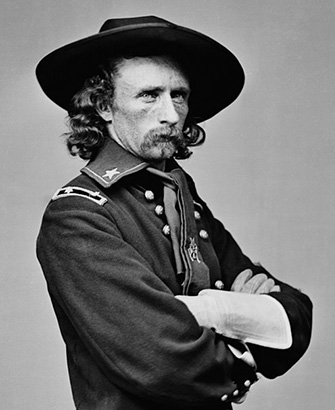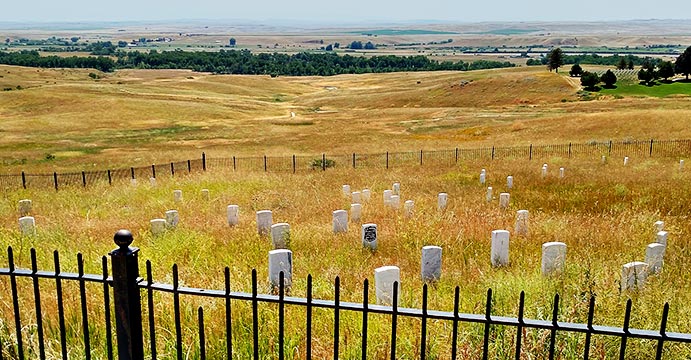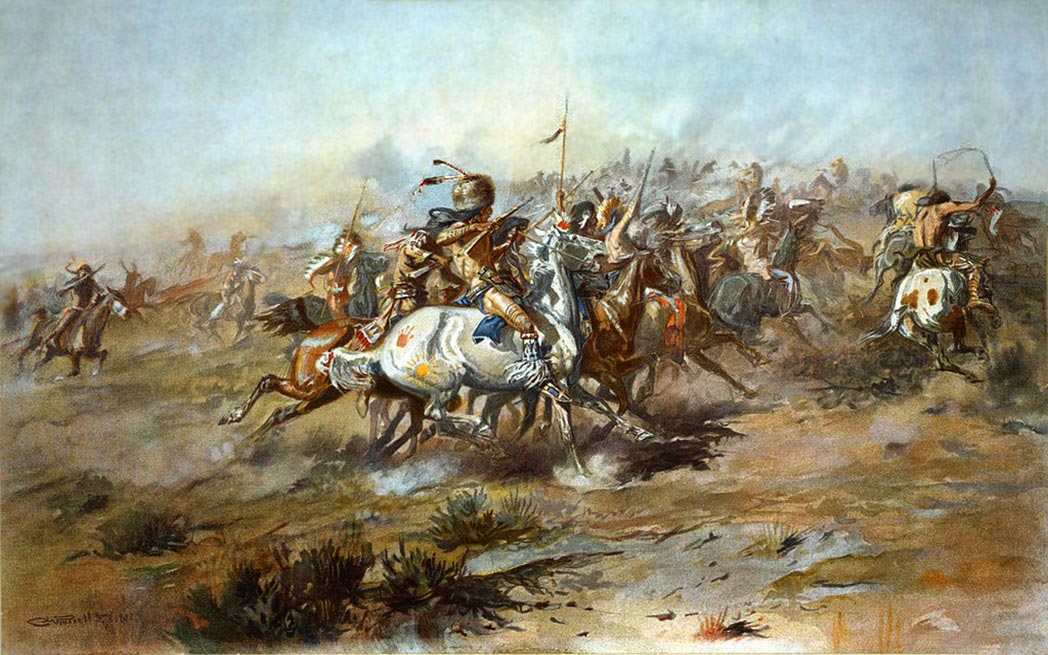Last stands compared:
From Custer to Putin
Russian agression against Ukraine hearkens back to U.S. assault on aboriginals
By Byron Toben
April 7, 2022
In 1876, U.S. Lt. Colonel Robert Armstrong Custer led 700 troops of the 7th cavalry regiment on to historic lands of the Lakota Sioux, in what is now parts of Montana, to force them back onto the limited reservation they had been obliged to reside in without access to the diminished buffalo herds that were their mainstay.

Lieutenant Colonel George Armstrong Custer – Image: Mathew Brady, Public domain, via Wikimedia Commons
According to Custer’s own writings, part of his strategy had been to hold the women and children as hostages so the male warriors would disband without violence. This was part of the U.S. doctrine, under the “Manifest Destiny” thesis, that it was meant to rule all the lands from the Atlantic to the Pacific.
Custer’s sources had estimated the strength of the Sioux and Cheyenne allies to be 800 “hostiles.” However, his sources had underestimated the mounting resistance which, inspired by Chief Sitting Bull’s “Sun Dance,” gathered many tribal chiefs, most famously Crazy Horse, to total about 2500.
Thus, Custer’s advance party of 268 was vastly outnumbered while dug in at Little Big Horn and completely decimated. His troops had included some hardened Civil War veterans and some raw recruits, largely recent German and Irish immigrants.
Only one soldier, Frank Finkel, claimed to be a survivor (contested) and one horse (uncontested). The horse, named “Comanche” was stuffed after his death and is currently on display in a Kansas museum.
Custer’s backups, miles behind, consisted of reserve battalions and mule trains with tons of foodstuffs.

Little Big Horn – Custer’s tomb is in centre – Image: Winkelvi, CC BY-SA 4.0, via Wikimedia Commons
Fast forward 146 years to 2022, the Russian military in tanks, backed up by airplanes and long-range missiles, and inspired by Russian mythology that it was meant to rule from the Arctic to the Black Sea, invaded the historic lands of Ukraine for its own Manifest Destiny, expecting that the inhabitants would welcome them.
Details of Custer’s defeat took some years to be revealed. Details of Putin’s defeat in our high-tech world are almost simultaneous.
The unexpected resistance has forced many stalled Russian recruits to desert and kill stray dogs for food.
Details of Custer’s defeat took some years to be revealed. Details of Putin’s defeat in our high-tech world are almost simultaneous.
Custer’s reserves, unused, included the then-new Gatling machine gun. Putin’s reserves include the possible use of chemical, biological and even nuclear weapons. The script is still unfolding.
To paraphrase Tiny Tim, “God save us, everyone.”
Feature image: The Custer Fight by Charles Marion Russell, Library of Congress
More articles from Byron Toben
Byron Toben, a past president of The Montreal Press Club, has been WestmountMag.ca’s theatre reviewer since July 2015. Previously, he wrote for since terminated web sites Rover Arts and Charlebois Post, print weekly The Downtowner and print monthly The Senior Times. He also is an expert consultant on U.S. work permits for Canadians.


A very timely and important article. The way we treat the First Nations and Inuit peoples in what is north america is terrible. We can easily return vast amounts of crown and federal lands to their rightful owners. This would be an excellent first start towards real reconciliation.